overview
scheduling and pricing
- Thematic courses are open to visiting students who are not enrolled in CILAS' yearlong study programme in the liberal arts.
- In trimester two of the academic year 2015-2016 (December 27th to March 12th, 2016), CILAS is offering twelve thematic courses listed below.
- Thematic courses are of a duration of ten weeks with two and half class hours per week.
- Most of the thematic courses begin the week of December 27th and end the week of March 5th while some begin the week of January 3rd and end the week of March 12th.
- For further inquiry about the thematic course offer, do not hesitate to contact us.
scheduling and pricing
- Classes are scheduled both in the morning from 10am to 12:30pm and in the evening from 5:30pm to 8pm.
- Morning and evening classes discuss the same topic.
- Participants are required to attend 80% of scheduled classes.
- Thematic courses are chargeable at 1500 L.E.
- Should you have course-specific questions, please do not hesitate to contact the fellows directly (following the course link).
course descriptions
(to apply, please follow the 'continue' link)
course descriptions
(to apply, please follow the 'continue' link)
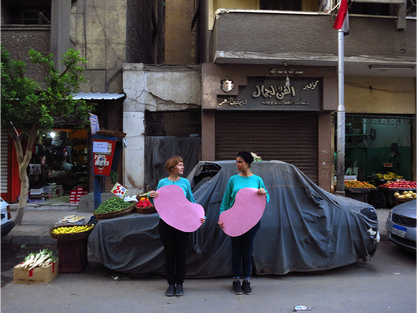
new eyes, old city
Have you ever wanted to look at the world with new eyes? This creative course explores the idea of everyday environment visually. Our everyday world is made up of objects, which we navigate in our daily routines. The course will focus on the social fabric of Cairo and invites you to examine your personal relationship to the city.
to photograph is to be human as well as a basic form of expression and communication. People everywhere make images; we use photographs to document our daily lives, to celebrate important moments and to communicate certain ideas. Image making is a global language. It succeeds where verbal or text based communication fails. Photographs allow us to understand our surroundings and our role within society.
continue description
Have you ever wanted to look at the world with new eyes? This creative course explores the idea of everyday environment visually. Our everyday world is made up of objects, which we navigate in our daily routines. The course will focus on the social fabric of Cairo and invites you to examine your personal relationship to the city.
to photograph is to be human as well as a basic form of expression and communication. People everywhere make images; we use photographs to document our daily lives, to celebrate important moments and to communicate certain ideas. Image making is a global language. It succeeds where verbal or text based communication fails. Photographs allow us to understand our surroundings and our role within society.
continue description
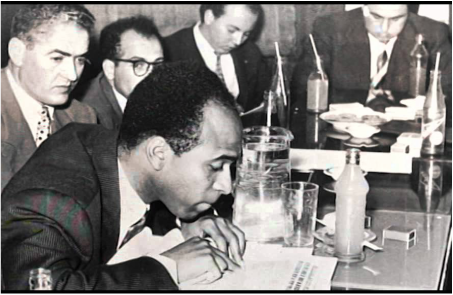
theorising the state in Africa
“The state” is a term we hear all the time: in the news, in personal conversations, on TV shows. We read about it in books and we come across it in official documents. It’s a term we should be able to define because it’s literally everywhere, and yet it continues to be one of the biggest enigmas in political thought. What exactly is “the state”?
The aim of this course is to show how different groups of people at different times have looked at the state in radically different ways. A lot of the focus has been on theories and definitions put forward by your typical political theorist: a male, European or American in origin, and likely to be an academic. In this course, the aim is to instead chart a people’s history of the state.
continue description
“The state” is a term we hear all the time: in the news, in personal conversations, on TV shows. We read about it in books and we come across it in official documents. It’s a term we should be able to define because it’s literally everywhere, and yet it continues to be one of the biggest enigmas in political thought. What exactly is “the state”?
The aim of this course is to show how different groups of people at different times have looked at the state in radically different ways. A lot of the focus has been on theories and definitions put forward by your typical political theorist: a male, European or American in origin, and likely to be an academic. In this course, the aim is to instead chart a people’s history of the state.
continue description
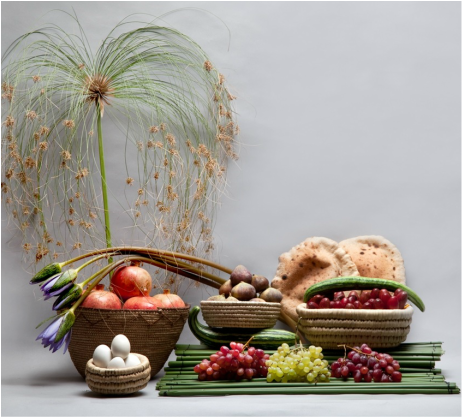
'eish, horreya, 'adala igtima'eya (bread, freedom, social justice)
In this course, we will explore the issues of Right to Food and Food Sovereignty within the Egyptian context. These concepts will be discussed with the backdrop of Egypt’s history of food production, introduction of plant and animal species and food heritage. Along this line of thought, we will delve further into more complex and urgent issues such as consumers and farmers rights, fair trade, intellectual property rights, GMOs, food subsidy and sustainable food systems.
We shall also try to pinpoint the current trends in food consumption in Egypt and how these are shaping the future of agriculture and food production in general. Thereby exploring the rise in organic and aquaponic farms, vegan and vegetarian tendencies, healthy foods fads, food movements, farmers markets, “new age” restaurants and social media groups. Participants will be encouraged to contribute through their own observations of various food trends.
continue reading
In this course, we will explore the issues of Right to Food and Food Sovereignty within the Egyptian context. These concepts will be discussed with the backdrop of Egypt’s history of food production, introduction of plant and animal species and food heritage. Along this line of thought, we will delve further into more complex and urgent issues such as consumers and farmers rights, fair trade, intellectual property rights, GMOs, food subsidy and sustainable food systems.
We shall also try to pinpoint the current trends in food consumption in Egypt and how these are shaping the future of agriculture and food production in general. Thereby exploring the rise in organic and aquaponic farms, vegan and vegetarian tendencies, healthy foods fads, food movements, farmers markets, “new age” restaurants and social media groups. Participants will be encouraged to contribute through their own observations of various food trends.
continue reading
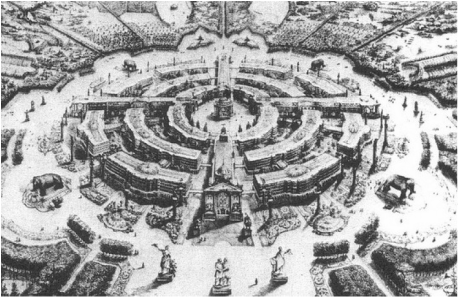
reading Plato's Republic in Cairo
Whoever desires to make the world a better place sooner or later encounters the tension between theory and practice, between ideal and reality. One might desire to unify the two: to make theory that is more in line with practice. But are impractical theories bad? Plato says no. In his Republic, he argues that only useless theories are useful, and that the ideal society is relevant even when it is not realisable.
Three questions immediately arise. Why does Plato resist the unification of theory and practice? Is the best society the same for every place and every time? Finally, are present-day conditions more favourable than Plato's time for unifying theory with practice? In this course, we will examine the theory-practice problematic.
continue description
Whoever desires to make the world a better place sooner or later encounters the tension between theory and practice, between ideal and reality. One might desire to unify the two: to make theory that is more in line with practice. But are impractical theories bad? Plato says no. In his Republic, he argues that only useless theories are useful, and that the ideal society is relevant even when it is not realisable.
Three questions immediately arise. Why does Plato resist the unification of theory and practice? Is the best society the same for every place and every time? Finally, are present-day conditions more favourable than Plato's time for unifying theory with practice? In this course, we will examine the theory-practice problematic.
continue description
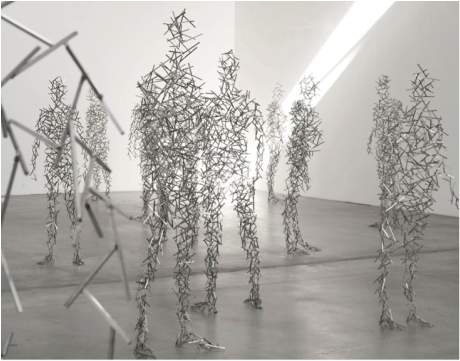
on madness: an inquiry into margins and emotions
Living through times of revolution forced us to contemplate the place of emotions in public life and the diverse psychological states that come with deeply turbulent everyday lives. Margins is a theme that runs through this course. We will ask how margins are drawn and become the substance of many dichotomies that govern our emotional life - the sane/insane, normal/abnormal, public/private, personal/political, mad/creative.
Looking at representations of madness both by insider and outsider artists we let those who occupy the margins tell us about our very societies. The course is inspired by inquiries such as Sara Ahmed’s The Cultural Politics of Emotions, Ann Cvetkovich's Depression: A public feeling and by queer theory’s attention to affects, margins and failures. This means that we locate experiences of the psyche within wider socio-politics.
continue reading
Living through times of revolution forced us to contemplate the place of emotions in public life and the diverse psychological states that come with deeply turbulent everyday lives. Margins is a theme that runs through this course. We will ask how margins are drawn and become the substance of many dichotomies that govern our emotional life - the sane/insane, normal/abnormal, public/private, personal/political, mad/creative.
Looking at representations of madness both by insider and outsider artists we let those who occupy the margins tell us about our very societies. The course is inspired by inquiries such as Sara Ahmed’s The Cultural Politics of Emotions, Ann Cvetkovich's Depression: A public feeling and by queer theory’s attention to affects, margins and failures. This means that we locate experiences of the psyche within wider socio-politics.
continue reading
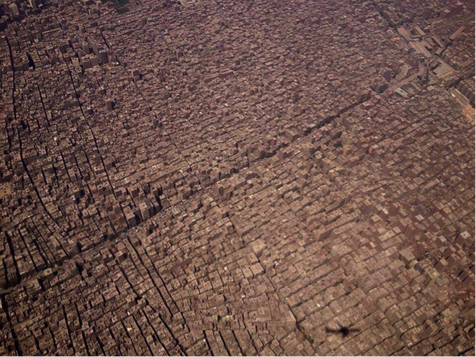
the urban experience: an ethnographic approach
The city is a complex and ever-changing multiplicity of material objects and human bodies coming together in time and space. This course explores how people use and manoeuver this urban complexity, how they make sense of it, ascribe meaning to it, and integrate it into their discourses. The course explores how people interact with the multitude of objects they encounter as they move their own bodies through urban space.
A focus on everyday practices and interactions will provide us with an in-depth analysis of how such practices and interactions are shaped by the urban environment, and, in turn, shape and reshape that urban environment. The course takes an ethnographic approach to the city. This means that we will seek to understand the city through experiencing it. Participants will be introduced to ethnographies of cities, including New York, Sao Paolo, Cairo and Nicosia.
continue description
The city is a complex and ever-changing multiplicity of material objects and human bodies coming together in time and space. This course explores how people use and manoeuver this urban complexity, how they make sense of it, ascribe meaning to it, and integrate it into their discourses. The course explores how people interact with the multitude of objects they encounter as they move their own bodies through urban space.
A focus on everyday practices and interactions will provide us with an in-depth analysis of how such practices and interactions are shaped by the urban environment, and, in turn, shape and reshape that urban environment. The course takes an ethnographic approach to the city. This means that we will seek to understand the city through experiencing it. Participants will be introduced to ethnographies of cities, including New York, Sao Paolo, Cairo and Nicosia.
continue description
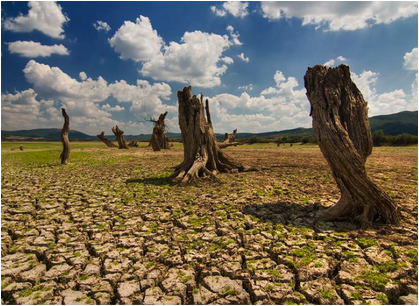
the death of Nature
The Enlightenment and the rise of capitalism have brought about a change in our relationship with nature. Francis Bacon-celebrated father of modern science-advocated the control of nature for human use. Nature was to be predicted and controlled. This created a rift between nature and humans and we started placing ourselves outside of nature.
Consequently, we removed the restrictions on the exploitation of nature and our production systems came to rely on excessive input of materials. Nature’s circular metabolism was disrupted by our linear production systems producing more and more waste or entropy. We now find ourselves facing multiple risks and crises ranging from climate change and global warming to food shortages and problems with waste disposal.
continue description
The Enlightenment and the rise of capitalism have brought about a change in our relationship with nature. Francis Bacon-celebrated father of modern science-advocated the control of nature for human use. Nature was to be predicted and controlled. This created a rift between nature and humans and we started placing ourselves outside of nature.
Consequently, we removed the restrictions on the exploitation of nature and our production systems came to rely on excessive input of materials. Nature’s circular metabolism was disrupted by our linear production systems producing more and more waste or entropy. We now find ourselves facing multiple risks and crises ranging from climate change and global warming to food shortages and problems with waste disposal.
continue description
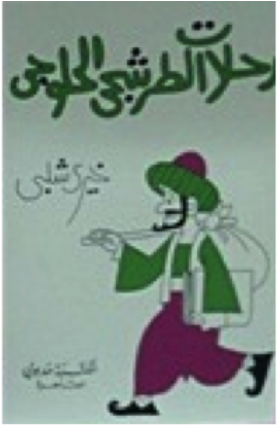
el rihla: literature and re-thinking the histories of Egypt
The course asks what it means to think, narrate, and produce knowledge of history. Do these ideas, narratives, and the produced knowledge affect how we collectively shape history? We explore these questions in our journey from the 25th of January revolution in 2011 to the ‘urabi revolution in 1881. El-Rihla between these two moments is far from linear; we travel through layers of history rather than on a straight line.
The focus is not on the sequence of events, but on how they have been thought, narrated, known, and remembered. In other words, we will look at how history continues to shape the present. Literature offers a way to engage this question of ‘how?’ In exploring the relationship between 2011 and 1881 through literature, we will survey some of the major debates on history, memory, and the possibility of ‘change’.
Ibn Shalabi, the protagonist of Rihalat al-Turshagi el-Halwagi, guides us on our journey through layers of history, as we shall discover in our very first class. He introduces us to figures like: Ahmad ‘Urabi, Taqi el-Din al-Maqrizi, Abd al-Rahman ibn Khaldun, Jacques Derrida, Dipesh Chakrabarty, Walter Benjamin, and finally to al-nas.
continue reading
The course asks what it means to think, narrate, and produce knowledge of history. Do these ideas, narratives, and the produced knowledge affect how we collectively shape history? We explore these questions in our journey from the 25th of January revolution in 2011 to the ‘urabi revolution in 1881. El-Rihla between these two moments is far from linear; we travel through layers of history rather than on a straight line.
The focus is not on the sequence of events, but on how they have been thought, narrated, known, and remembered. In other words, we will look at how history continues to shape the present. Literature offers a way to engage this question of ‘how?’ In exploring the relationship between 2011 and 1881 through literature, we will survey some of the major debates on history, memory, and the possibility of ‘change’.
Ibn Shalabi, the protagonist of Rihalat al-Turshagi el-Halwagi, guides us on our journey through layers of history, as we shall discover in our very first class. He introduces us to figures like: Ahmad ‘Urabi, Taqi el-Din al-Maqrizi, Abd al-Rahman ibn Khaldun, Jacques Derrida, Dipesh Chakrabarty, Walter Benjamin, and finally to al-nas.
continue reading
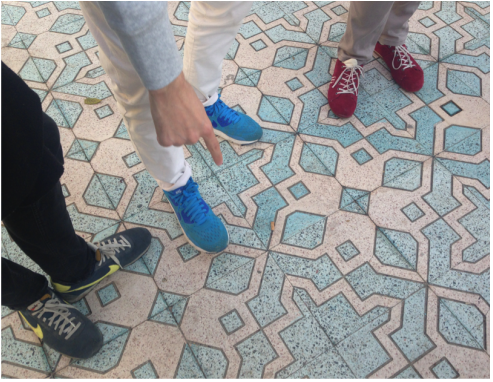
visible publics
Suppose there was art and nobody showed up: a museum void of visitors, a
concert without a crowd, graffiti that no one ever sees. Audiences are not a by-product of art; instead, their roles are an integral part of the works (and institutions) themselves. In galleries and in theaters, on pages and online, regardless of context or media, art overwhelmingly makes a play to be acknowledged as a creative endeavor, for which feedback is key.
Borrowing its title from Sarah Rifky’s 2010 exhibition Invisible Publics, this course aims to demystify art spaces and to uncover the structures that are unique to our personal perception of art. We will find our points of entry by discussing frankly why we may feel uncomfortable or out of place in art spaces or when it comes to certain art works, but also why we we think we like the things that we do. We will explore the underlying political, economic, historical structures that have helped form these viewpoints.
continue description
Suppose there was art and nobody showed up: a museum void of visitors, a
concert without a crowd, graffiti that no one ever sees. Audiences are not a by-product of art; instead, their roles are an integral part of the works (and institutions) themselves. In galleries and in theaters, on pages and online, regardless of context or media, art overwhelmingly makes a play to be acknowledged as a creative endeavor, for which feedback is key.
Borrowing its title from Sarah Rifky’s 2010 exhibition Invisible Publics, this course aims to demystify art spaces and to uncover the structures that are unique to our personal perception of art. We will find our points of entry by discussing frankly why we may feel uncomfortable or out of place in art spaces or when it comes to certain art works, but also why we we think we like the things that we do. We will explore the underlying political, economic, historical structures that have helped form these viewpoints.
continue description
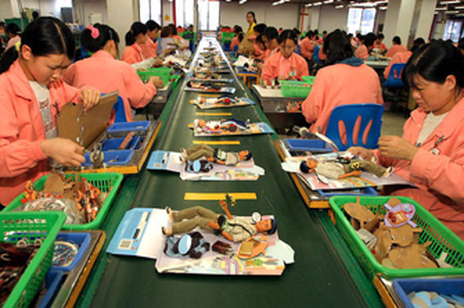
on gender and difference
Gender as a category of difference, and particularly woman as a subjectivity, is all the rage these days in the media, development industry, as well as in state discourse. However, gender as a social classification is rarely explored further and we often speak about gendered subjects as unified identities outside of time and space. Not only are genders presented to us as stable categories, but the power relationships that give rise to our gendered subjectivities remain hidden.
In this course we seek to go beyond the simplified narratives routinely presented to us and instead place gender within a temporal and spatial framework. We want to understand nuances, particularities and subtle differences in a world where everyone is already always a gendered subject. We will delve into the academic literature in gender studies to examine everyday life in the global south.
continue reading
Gender as a category of difference, and particularly woman as a subjectivity, is all the rage these days in the media, development industry, as well as in state discourse. However, gender as a social classification is rarely explored further and we often speak about gendered subjects as unified identities outside of time and space. Not only are genders presented to us as stable categories, but the power relationships that give rise to our gendered subjectivities remain hidden.
In this course we seek to go beyond the simplified narratives routinely presented to us and instead place gender within a temporal and spatial framework. We want to understand nuances, particularities and subtle differences in a world where everyone is already always a gendered subject. We will delve into the academic literature in gender studies to examine everyday life in the global south.
continue reading
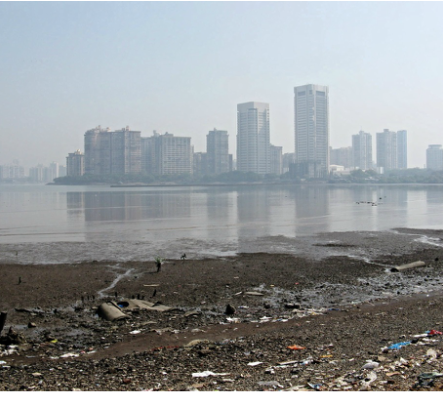
literary representations of the urban global south
Since the 19th century, the city and urban life have been a perpetual topos in literary and sociological texts. The city can be read and told by walking, seeing, exploring and writing. However, the image of the city has changed over the years, and with it the modes and possibilities of literary representation. We will explore questions of dimensionality, texture and identity, following a route that leads from the London of the 19th century to contemporary postcolonial city literature.
Today we speak of global cities, urban nodes in the landscape of global networks rather than of centres and margins. Metropolises like Cairo and Mumbai are not only relocated into the global network of economics and media but also within the once exclusively European tradition of the city novel. With the help of postcolonial literature we will ask what it means to live multilayered, trans-local identities. By means of creative writing we will develop our very own ways of re-enacting the city through text.
continue reading
Since the 19th century, the city and urban life have been a perpetual topos in literary and sociological texts. The city can be read and told by walking, seeing, exploring and writing. However, the image of the city has changed over the years, and with it the modes and possibilities of literary representation. We will explore questions of dimensionality, texture and identity, following a route that leads from the London of the 19th century to contemporary postcolonial city literature.
Today we speak of global cities, urban nodes in the landscape of global networks rather than of centres and margins. Metropolises like Cairo and Mumbai are not only relocated into the global network of economics and media but also within the once exclusively European tradition of the city novel. With the help of postcolonial literature we will ask what it means to live multilayered, trans-local identities. By means of creative writing we will develop our very own ways of re-enacting the city through text.
continue reading
